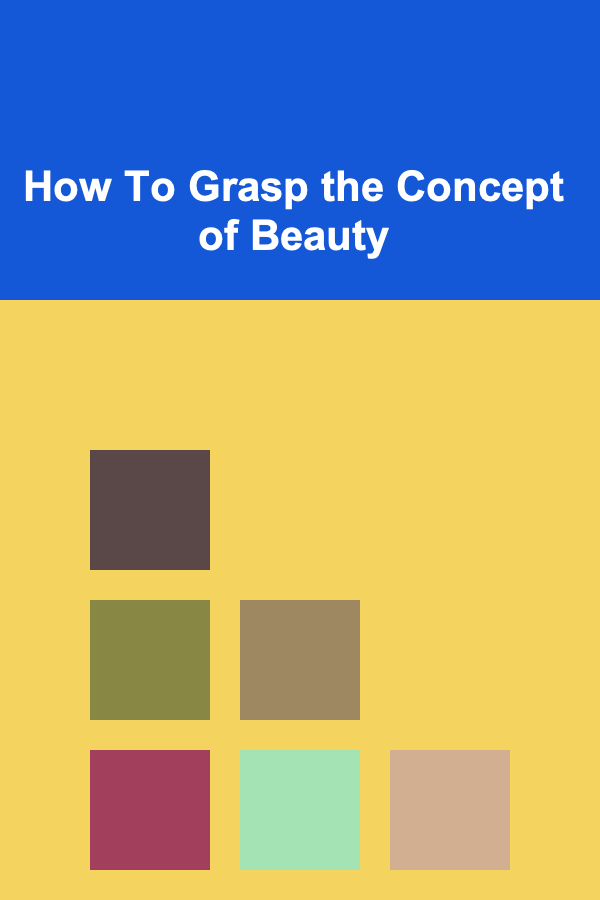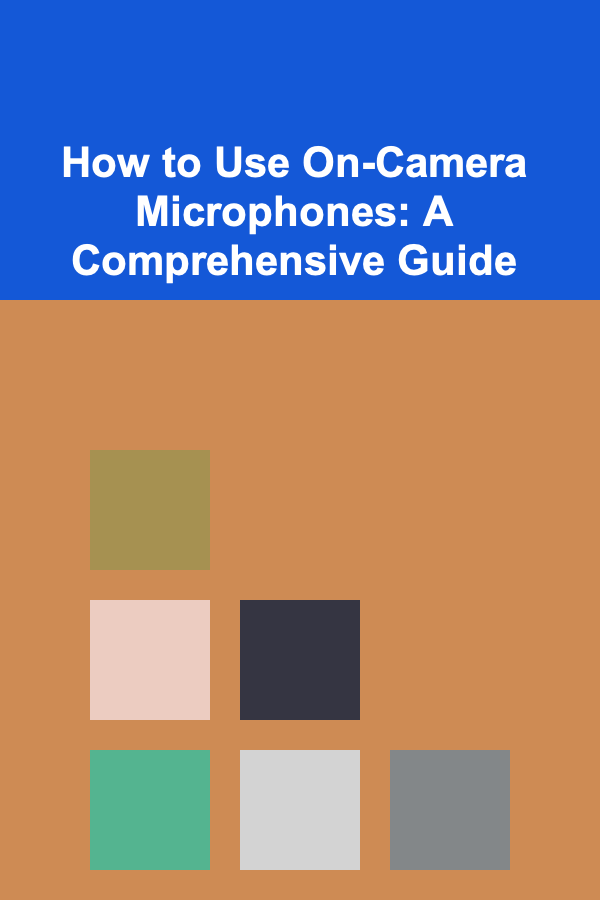
How To Grasp the Concept of Beauty
ebook include PDF & Audio bundle (Micro Guide)
$12.99$5.99
Limited Time Offer! Order within the next:

Beauty is a concept that has been debated, explored, and celebrated for millennia. From ancient philosophers like Plato to modern-day thinkers and artists, beauty has been considered one of the most profound and multifaceted ideas in human culture. It is present in everything---from the natural world to art, from human relationships to the technology we create. But despite its omnipresence, the question remains: What is beauty? How do we understand and grasp its meaning in a world that is constantly changing?
This essay explores the multifaceted concept of beauty by examining its philosophical, cultural, psychological, and aesthetic dimensions. We will discuss how beauty has been interpreted across different times and societies and explore how we can approach beauty in our own lives. Ultimately, the aim is to understand that beauty is not a singular, fixed entity but a complex, evolving concept that reflects our perceptions, values, and experiences.
Philosophical Perspectives on Beauty
The Ancient View
One of the earliest recorded musings on beauty comes from ancient Greece, where philosophers like Plato and Aristotle explored the concept in depth. Plato, in his dialogues, presents beauty as something transcendent, an ideal form that exists beyond the physical world. He proposes that beautiful things in the material world are simply reflections or imperfect representations of this ideal beauty. For Plato, beauty is a form of truth---a glimpse into a higher, more perfect reality.
Aristotle, while building on Plato's ideas, offers a more empirical approach. He argues that beauty lies in the proportion, harmony, and order of things. For Aristotle, beauty is not just an abstract idea but something we can perceive and analyze in the physical world. His emphasis on symmetry and balance has had a lasting influence on the ways we understand beauty in art, nature, and human beings.
The Renaissance and the Aesthetic Revolution
During the Renaissance, beauty underwent a dramatic transformation in both philosophy and practice. With the rediscovery of classical Greek and Roman ideals, Renaissance thinkers and artists sought to recapture the notions of beauty expressed by philosophers like Plato and Aristotle. They believed that beauty could be found in the human form, in nature, and in the divine order of the universe.
Artists like Leonardo da Vinci, Michelangelo, and Raphael worked tirelessly to create works of art that adhered to the principles of proportion and harmony. The idea of beauty became deeply connected to the human body and its representation. It was during this period that the notion of the "beautiful body" as a symbol of both physical and spiritual perfection emerged, influencing artistic traditions and beauty standards for centuries to come.
The Enlightenment and the Shift in Perspective
The Enlightenment marked a turning point in how beauty was perceived. Philosophers like Immanuel Kant and David Hume introduced new ways of thinking about beauty that moved away from the classical and religious ideals. Kant, for instance, distinguished between the "beautiful" and the "sublime," arguing that beauty was subjective and dependent on individual experience. He suggested that beauty could not be reduced to a universal definition; instead, it was a feeling that arose when we encountered something that elicited a sense of harmony, proportion, or balance in our minds.
This shift allowed for the development of the idea that beauty is not fixed or objective but rather a reflection of personal taste and perception. This became especially important in the realm of art, where artists began to experiment with different forms, colors, and techniques, moving away from the rigid standards of classical beauty.
Cultural Influences on Beauty
Beauty and Cultural Standards
While the ancient Greeks and Renaissance artists had their own defined notions of beauty, each society throughout history has had its own set of beauty standards. These standards are shaped by cultural, historical, and social contexts, making the concept of beauty highly subjective and culturally specific.
In many Western societies, for example, beauty has often been associated with youth, symmetry, and thinness, particularly in women. These ideals are perpetuated by media, advertising, and entertainment industries, which create and enforce specific beauty standards that are often unattainable for the majority of people. As a result, beauty can become an obsession, particularly for women, who are often measured against a narrow, unrealistic set of criteria.
In contrast, other cultures may have different standards of beauty. For example, in some African and Indigenous cultures, beauty is often associated with body modification, such as tattoos, piercings, or scarification, which are considered markers of status, strength, and identity. In Japan, traditional beauty ideals emphasize grace, elegance, and subtlety, with a particular focus on the appearance of the skin and the simplicity of clothing.
Thus, beauty is not only a personal or universal experience but also a social construct that varies from culture to culture. It is something that is deeply intertwined with identity, history, and power dynamics within a given society.
Globalization and the Changing Face of Beauty
In the modern era, globalization has brought various beauty standards into greater contact with one another, creating new opportunities for cross-cultural exchange as well as tensions. The rise of social media has played a significant role in this process, as influencers and celebrities from around the world share their beauty routines and ideals with global audiences. This has led to the spread of certain beauty trends, such as the pursuit of flawless skin, fuller lips, or a slim figure, which are now prevalent in many cultures.
However, this globalization of beauty ideals has also sparked resistance and criticism. Movements advocating for body positivity and the acceptance of diverse body types challenge the narrow, often unattainable standards of beauty promoted by the media. These movements emphasize the importance of self-love and acceptance, arguing that beauty should not be defined by external appearances but rather by individual confidence, self-expression, and authenticity.
Psychological Dimensions of Beauty
The Role of Perception in Beauty
Psychologically, beauty is often linked to the way we perceive and interpret the world around us. Our brains are wired to respond to certain visual cues---symmetry, balance, color harmony---that trigger feelings of pleasure and satisfaction. This explains why certain patterns or shapes, such as the golden ratio, are perceived as particularly beautiful across various cultures and eras. These patterns may be hardwired into our biology, a product of evolutionary preferences that favor symmetry as a sign of health, fertility, or genetic fitness.
However, our perception of beauty is not solely biological; it is also shaped by our personal experiences, memories, and emotional responses. For example, a person may find a particular landscape beautiful not only because of its aesthetic qualities but also because it is tied to a meaningful memory or a place of personal significance. In this way, beauty is deeply subjective, influenced by both our sensory responses and our emotional associations.
The Power of Beauty on Human Emotions
Beauty has a powerful effect on human emotions and psychology. Encountering something beautiful can evoke a wide range of positive feelings---joy, awe, admiration, or even a sense of transcendence. The experience of beauty can stimulate the release of dopamine, the brain's "feel-good" chemical, which explains why we seek out beautiful experiences, whether it be in art, nature, or relationships.
In fact, beauty has the power to affect our sense of well-being. Studies have shown that exposure to aesthetically pleasing environments can reduce stress, improve mood, and enhance overall happiness. This may be why we are naturally drawn to beautiful places---such as forests, beaches, or mountains---which provide us with a sense of peace and serenity.
On the other hand, the absence of beauty or exposure to unpleasant environments can have the opposite effect, leading to feelings of discomfort, anxiety, or sadness. This demonstrates that beauty is not just a superficial concept but something that can influence our mental and emotional health in profound ways.
The Aesthetic Appreciation of Beauty
Beauty in Art
Art has long been considered one of the highest forms of human expression of beauty. From the intricate details of Renaissance paintings to the abstract forms of modernist art, beauty in art takes on a wide range of meanings. Some artists, like the Impressionists, focused on capturing fleeting moments of beauty in nature, using light and color to create a sense of dynamism and movement. Others, like the Surrealists, sought to uncover deeper layers of beauty hidden in the unconscious mind.
The appreciation of beauty in art requires more than just a passive experience. It involves active engagement, interpretation, and reflection. When we look at a painting, sculpture, or performance, we are not only assessing its visual appeal but also interpreting its meaning, history, and emotional resonance. Art allows us to explore different interpretations of beauty and challenge our preconceived notions about what is beautiful.
Beauty in Nature
Nature has long been a source of inspiration for those seeking to understand beauty. The grandeur of a sunset, the delicate form of a flower, or the vastness of a mountain range---all evoke a deep sense of awe and appreciation. Beauty in nature is often considered a universal experience, transcending cultural boundaries and connecting humans to something larger than themselves.
Philosophers like Edmund Burke and John Ruskin explored the relationship between nature and beauty, arguing that the natural world has an intrinsic beauty that appeals to our senses. The concept of the "sublime," as articulated by Burke, refers to beauty that inspires awe and wonder, often in the face of something vast, terrifying, or incomprehensible.
Beauty and the Human Form
The human body has also been a central focus of beauty throughout history. From the classical sculptures of ancient Greece to contemporary fashion photography, the human form has been idealized, celebrated, and scrutinized. The study of beauty in the human body involves not only physical features but also the expression of personality, emotion, and character.
While beauty standards may vary across cultures and time periods, certain physical attributes---such as symmetry, clear skin, and proportional features---are universally considered markers of beauty. These qualities may signal health, genetic fitness, and youth, factors that are naturally appealing to the human eye.
Conclusion
The concept of beauty is vast, elusive, and deeply personal. It transcends simple definitions and exists as a dynamic, evolving idea shaped by cultural, psychological, philosophical, and artistic influences. Whether in the symmetry of a face, the harmony of a work of art, or the serenity of a natural landscape, beauty is a universal experience that connects us to something greater than ourselves.
In the end, beauty is not something we can fully grasp with a single, fixed definition. Instead, it is a concept that invites exploration, reflection, and appreciation in all its forms. By embracing the many ways in which beauty manifests in our lives---whether in the natural world, human relationships, or the art we create---we can deepen our understanding of what it means to encounter beauty and appreciate its power to shape our emotions, our perceptions, and our very sense of self.

How to Find Your Niche in Travel Photography for Better Earnings
Read More
How to Secure Your Home When Moving into a New Property
Read More
How to Set Up a First-Aid Station at Home
Read More
How To Discover Advances in Chronic Fatigue Syndrome
Read More
How to Use On-Camera Microphones: A Comprehensive Guide
Read More
How to Negotiate Your Salary as an SEO Specialist
Read MoreOther Products

How to Find Your Niche in Travel Photography for Better Earnings
Read More
How to Secure Your Home When Moving into a New Property
Read More
How to Set Up a First-Aid Station at Home
Read More
How To Discover Advances in Chronic Fatigue Syndrome
Read More
How to Use On-Camera Microphones: A Comprehensive Guide
Read More